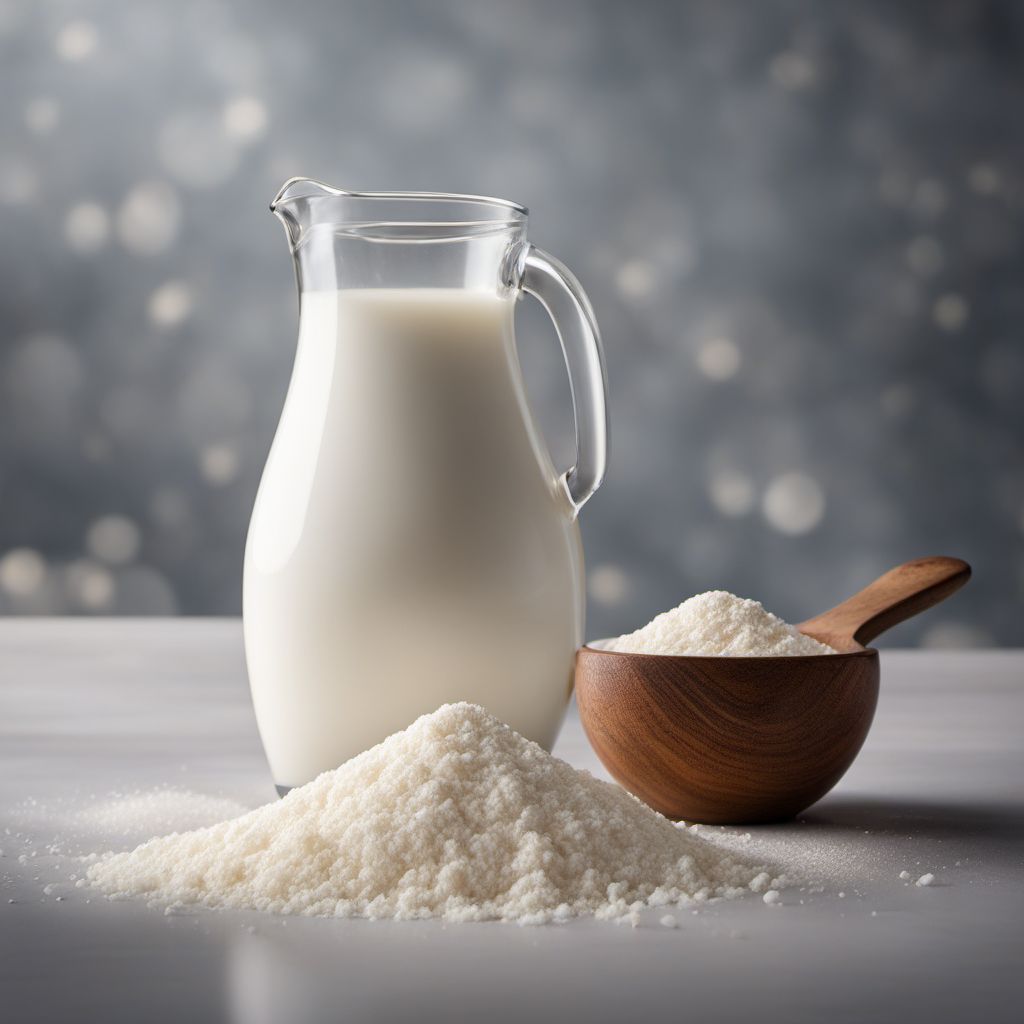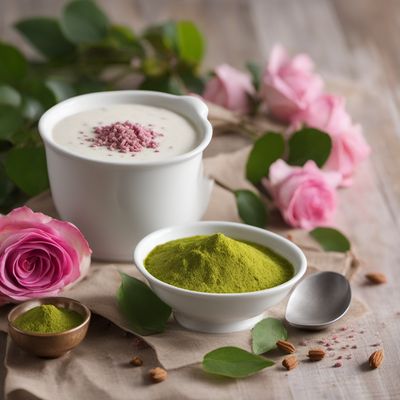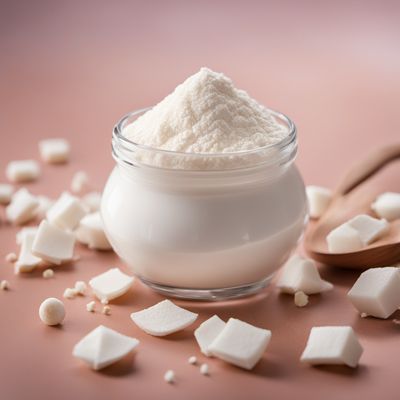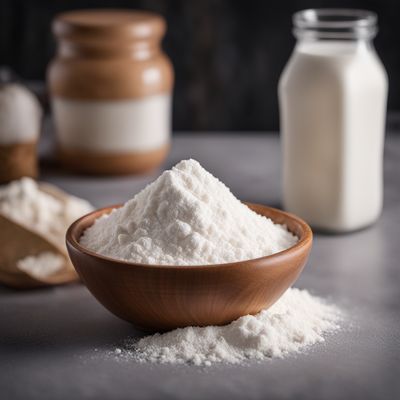
Ingredient
Milk powder
The Versatile Dairy Essential
Milk powder is a dehydrated form of milk that is obtained by evaporating the moisture from fresh milk. It is available in both skimmed and full-fat varieties. Milk powder has a fine, powdery texture and a creamy white color. When reconstituted with water, it closely resembles the taste and texture of fresh milk. It is commonly used in baking, cooking, and as a convenient alternative to fresh milk in recipes.
Origins and history
The production of milk powder dates back to ancient times when people discovered the benefits of preserving milk in a dehydrated form. The process of making milk powder has evolved over the years, with modern techniques ensuring the retention of nutritional value and flavor. Milk powder has become a staple ingredient in many households, providing a convenient and long-lasting source of dairy nutrition.
Nutritional information
Milk powder is a good source of essential nutrients, including calcium, protein, vitamins, and minerals. It is often fortified with additional vitamins and minerals to enhance its nutritional value. However, it is important to note that milk powder may contain lactose, making it unsuitable for individuals with lactose intolerance or milk allergies.
Allergens
May contain lactose and milk allergens.
How to select
When selecting milk powder, opt for reputable brands that offer high-quality products. Check the packaging for the fat content and any additional additives or fortifications. Look for milk powder that dissolves easily and has a smooth texture when reconstituted with water.
Storage recommendations
To maintain the freshness and quality of milk powder, store it in an airtight container in a cool, dry place away from direct sunlight. Properly stored, it can last for several months or even longer. Once reconstituted, store the liquid milk in the refrigerator and consume it within a few days.
How to produce
Milk powder can be produced on a small scale by evaporating fresh milk until it becomes a solid, which is then ground into a fine powder. However, commercial production of milk powder involves specialized equipment and processes to ensure proper dehydration and preservation of the milk's nutritional properties.
Preparation tips
Milk powder can be used in a wide range of culinary applications. It is commonly used in baking to add richness and flavor to cakes, cookies, bread, and pastries. It can also be used to make homemade ice cream, yogurt, and other dairy-based desserts. Additionally, milk powder can be used as a substitute for fresh milk in recipes like soups, sauces, and creamy beverages.
Substitutions
Fresh milk, evaporated milk, condensed milk
Culinary uses
Milk powder is a versatile ingredient that is widely used in both sweet and savory dishes around the world. It is a staple in many baking recipes, particularly in Western cuisines. Milk powder is also commonly used in Asian cuisines, such as Indian, Thai, and Chinese, to add richness and creaminess to curries, desserts, and beverages.
Availability
Available worldwide
More ingredients from this category
Recipes using Milk powder » Browse all

Turks and Caicos Inipit
Tropical Delight: Turks and Caicos Inipit

Pantua - Sweet Delight from Bangladesh
Gulab Jamun's Bangladeshi Cousin: Pantua - A Sweet Symphony of Flavors

Homemade Cardamom Peda
Divine Delights: Cardamom Peda - A Sweet Symphony of Indian Flavors

Catalan Apple Empanadas
Deliciously Flaky Catalan Apple Empanadas

Macanese Cuccidati
Spiced Macanese Delights: Macanese Cuccidati Recipe

Wisconsin Kringle Recipe
Flaky Delights: Homemade Wisconsin Kringle

Vegan Apple Pie
Plant-Based Delight: Vegan Apple Pie

Homemade Spiced Mince Pies
Festive Delights: Spiced Mince Pies to Savor

Cuccidati - Sicilian Fig Cookies
Sicilian Delights: Irresistible Cuccidati Fig Cookies

Spanish Almond Pastries
Deliciously Nutty Spanish Almond Pastries

Danish Almond Kringle
Scandinavian Delight: Danish Almond Kringle

Swabian-style Egg Soup
Hearty Egg Soup with a Swabian Twist

